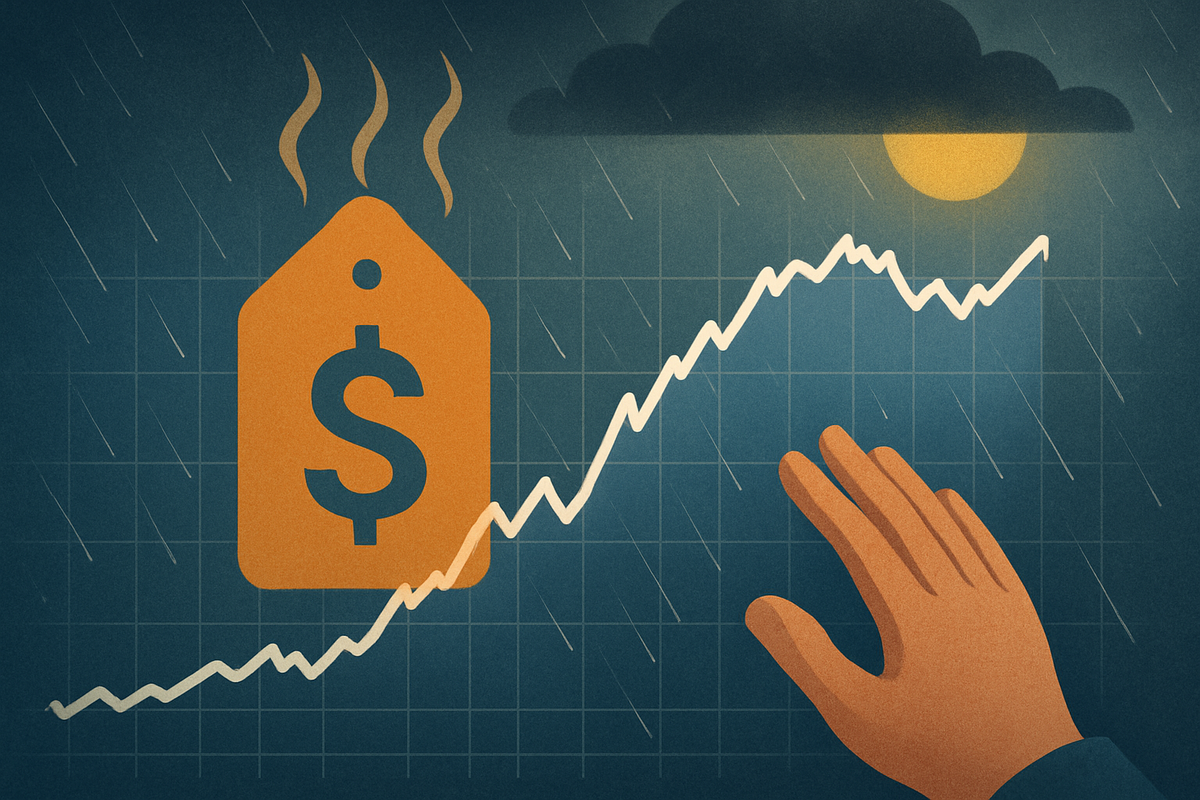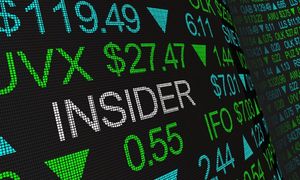
As of October 2025, the global stock market finds itself at a precarious crossroads. Despite a robust third-quarter rally fueled by optimism surrounding Artificial Intelligence (AI) and strong corporate earnings, persistent inflation concerns are casting a long shadow, introducing a palpable sense of fragility among investors. The market, characterized by a prevailing "cautious optimism," is grappling with the delicate balance between robust performance and the specter of accelerating price pressures.
This renewed inflationary pressure, evident in rising Consumer Price Index (CPI) figures and sticky long-run expectations, is prompting investors to reassess risk and re-evaluate the sustainability of recent gains. While the Federal Reserve is widely anticipated to cut interest rates in the coming months, the persistent upward trajectory of inflation could narrow the scope for such dovish actions, thereby increasing market volatility and placing significant pressure on corporate profit margins.
The Unfolding Scenario: A Rally Under Duress
The third quarter of 2025 witnessed a broad-based rally across global equities, a welcome development driven by an easing of trade tensions, the continued fervent optimism surrounding AI innovations, and rising expectations for near-term interest rate cuts from the US Federal Reserve. US equities, in particular, delivered impressive gains, with the S&P 500 Index (SPX) returning 8.1% and the Nasdaq Composite (IXIC) climbing 11.2%, predominantly led by technology and AI-related sectors. The Dow Jones Industrial Average (DJIA) also posted significant advances, buoyed by robust corporate earnings reports.
However, beneath this veneer of market strength, a growing undercurrent of inflation concerns has begun to assert itself. Headline inflation, as measured by the CPI, has been on an upward trend, reaching 2.7% year-over-year in July and projected to accelerate further to 3.1% annually by October 2025. Core inflation, which strips out the volatile food and energy components, has remained stubbornly elevated at 3.1%. Several factors are contributing to this resurgence, including new and escalating tariffs—particularly those stemming from US trade policies with China—which are expected to drive up goods inflation and consumer prices. Furthermore, long-run inflation expectations have spiked, indicating a widespread belief among consumers and businesses that price pressures will persist.
This complex interplay of strong corporate profitability and persistent inflation has created a "classic market standoff." Institutional investors are increasingly hedging against a potential downside move, reflecting a deep-seated distrust in the rally's longevity. Conversely, individual investors continue to "buy the dips," suggesting a more optimistic, albeit potentially less informed, outlook. This divergence in sentiment, coupled with a rising VIX volatility index and a discernible shift towards safe-haven assets, underscores a market showing signs of fatigue after a six-month upward trend. Consumer confidence remains notably weak, with the University of Michigan consumer sentiment index significantly below previous levels, and year-ahead inflation expectations stubbornly elevated. The Federal Reserve, a key player, faces the delicate task of balancing economic stability with inflation control, with market participants pricing in a high probability of rate cuts in October and December, even as inflation accelerates.
Companies Navigating the Inflationary Current
The impact of rising inflation is rarely uniform, creating a distinct landscape of winners and losers within the corporate world. Companies with strong pricing power and those in sectors less sensitive to input cost fluctuations are generally better positioned to weather the storm, while others may face significant margin compression and diminished investor appeal.
In an inflationary environment, value stocks tend to outperform growth stocks. Companies like those in the consumer staples sector, such as Procter & Gamble (NYSE: PG) or Coca-Cola (NYSE: KO), often demonstrate resilience. Their products are essential, allowing them to pass on increased costs to consumers with less demand elasticity. Similarly, industrials and materials companies that can leverage rising commodity prices or have robust supply chain management may also fare relatively well. For instance, a diversified industrial conglomerate like General Electric (NYSE: GE) or a mining giant like Rio Tinto (NYSE: RIO) could see some benefits if their output prices rise faster than their input costs.
Conversely, growth stocks, particularly those in technology with high valuations predicated on future earnings, can be vulnerable. Companies like many in the Software as a Service (SaaS) space, which rely on significant future cash flows, may see their present valuations diminish as higher interest rates—a common response to inflation—reduce the present value of those future earnings. While the AI boom has propelled many tech giants like Nvidia (NASDAQ: NVDA) and Microsoft (NASDAQ: MSFT) to new highs, persistent inflation could introduce headwinds by increasing operational costs and potentially dampening consumer and business spending on non-essential tech. Companies with high debt loads are also at risk, as rising interest rates increase borrowing costs, squeezing profitability. Furthermore, businesses with limited pricing power in highly competitive markets, such as certain retailers or hospitality providers, may struggle to absorb higher input costs without significantly impacting their profit margins.
Wider Implications and Historical Context
The current inflation concerns and their dampening effect on the stock market rally are not isolated events but rather fit into broader industry trends, with potential ripple effects across various sectors and implications for regulatory policy. The persistent inflation challenges the prevailing narrative of a "soft landing" for the economy, pushing central banks globally to maintain a vigilant stance.
This scenario highlights the ongoing debate about the long-term impacts of expansive monetary and fiscal policies enacted during the pandemic. While supply chain disruptions have largely eased, new factors like escalating trade tariffs are now contributing to price pressures, suggesting a more complex and potentially entrenched inflationary environment. The reliance on tariffs as a policy tool by the US government, for instance, has a direct inflationary impact, raising costs for businesses and consumers alike. This could prompt calls for adjustments in trade policy or alternative strategies to mitigate inflationary effects. Historically, periods of high inflation have often been met with aggressive monetary tightening, which, while effective in curbing inflation, can also trigger economic slowdowns or recessions. The current situation bears some resemblance to the late 1970s and early 1980s, when persistent inflation led to significant interest rate hikes by the Federal Reserve under Paul Volcker, ultimately taming inflation but at the cost of a recession. However, the current context differs with stronger corporate balance sheets and a more globalized economy, making direct comparisons nuanced. Regulatory bodies will be closely monitoring price stability, and there could be increased scrutiny on corporate pricing practices to ensure fair competition and prevent price gouging. The potential for a prolonged US government shutdown, as alluded to in recent market discussions, further complicates the regulatory and economic landscape by delaying crucial data releases and hindering timely policy responses.
Navigating the Path Ahead: Short-Term Volatility, Long-Term Resilience
The immediate future for the stock market is likely to be characterized by heightened volatility as investors grapple with conflicting signals: robust corporate earnings on one hand and persistent inflation concerns on the other. In the short term, market movements will be heavily influenced by incoming inflation data, central bank communications, and any developments in trade policy. The Federal Reserve's decisions regarding interest rate cuts will be paramount; while anticipated, any deviation from market expectations, either due to stronger-than-expected inflation or other economic factors, could trigger significant market reactions.
In the long term, companies that demonstrate strong fundamentals, efficient cost management, and the ability to innovate will be best positioned to navigate this environment. Strategic pivots towards supply chain resilience, automation, and sustainable practices could become even more critical. Market opportunities may emerge in sectors that traditionally perform well during inflationary periods, such as commodities, real estate, and certain value-oriented equities. Investors may also increasingly favor companies with strong balance sheets and consistent dividend payouts, as these can offer a degree of stability amidst economic uncertainty. Conversely, companies with high leverage, weak pricing power, or excessive reliance on discretionary consumer spending may face sustained challenges. Potential scenarios range from a "stagflationary" environment—slow economic growth coupled with high inflation—to a more optimistic outcome where inflation gradually subsides without a significant economic downturn. The latter would likely require a delicate balancing act by central banks and a favorable resolution to geopolitical and trade tensions.
A Prudent Outlook Amidst Shifting Sands
In summary, the current stock market rally, while impressive in its recent gains, is operating under the significant shadow of persistent inflation concerns as of October 2025. The key takeaway for investors is the necessity of a cautiously optimistic approach, recognizing the inherent fragility of the market while acknowledging the underlying strengths of corporate profitability and technological advancement. The confluence of rising CPI, escalating tariffs, and sticky inflation expectations has introduced a level of uncertainty that demands careful consideration.
Moving forward, the market's trajectory will largely hinge on the Federal Reserve's ability to manage inflation without stifling economic growth, and the resolution of ongoing geopolitical and trade disputes. Investors should brace for continued volatility and be prepared for potential market corrections, which, in a bull market, can often present buying opportunities for resilient assets. A diversified portfolio, with an emphasis on companies demonstrating strong pricing power, robust cash flows, and a proven ability to adapt to changing economic conditions, will be crucial. What investors should watch for in the coming months includes the evolution of inflation data, particularly core CPI, the Federal Reserve's interest rate decisions and forward guidance, and any shifts in global trade policies. These factors will collectively shape the market's path and determine the lasting impact of inflation on this resilient, yet vulnerable, stock market rally.
This content is intended for informational purposes only and is not financial advice






